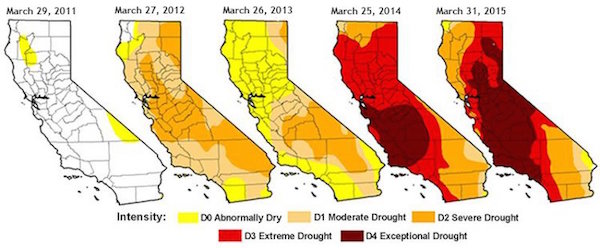No matter how advanced our technology and understanding of the world becomes, we can’t control the weather. In the southern and western areas of the United States, the future looks grim. Regions of Nevada, Oklahoma, Texas, Utah, New Mexico, Colorado, Arizona, and especially California have all been undergoing a multi-year drought. At least 30 states in the U.S. currently have some level of drought, ranging from “abnormally dry” conditions to “exceptional drought”. How’s your state faring? You can check using the NOAA’s U.S. Drought Monitor.

Approximate one-third of all American residential water goes to landscaping and gardening. Keeping the nation’s lawns fertile required about 9 billion gallons of water daily. Bringing that number down doesn’t mean giving up on the beauty of a lawn, but it does require a different approach. This guide is designed to explore the many options to create a water-friendly landscape, from plant selection to irrigation considerations, and cover much more along the way.
1. Replace your grass with artificial grass.
2. Replace your grass with gravel and stone.
Artificial grass looks more like the real deal than ever before, but a gravel, stone and paver garden gives the garden a contemporary, minimalist look. It’s still low maintenance (and requires zero water) and is a great counterpoint to succulents and a fire pit.
3. Use succulents in your garden design ideas.
4. If you can’t live without flowers, go with perennials.
5. Create a Plan for Natural Water Flow
Plants will need some moisture so you should use gravity and create a design to allow water to flow naturally to the plants when it does rain. Some ways to do this is to plant shrubs and plants on a slope or to create tiered flower beds that will hold water. Creating a drought-tolerant landscape design takes some research and thought, but the results are gorgeous. The best part is it is low maintenance as well.
Creating a drought tolerant landscape will save money on utilities, spend less time and energy on maintenance, make your lawn more beautiful and colorful, and increase your home’s curb appeal – all of that while supporting the environment and local ecosystem. Regardless of whether you live in a drought-plagued region or not, xeriscaping can save you money while keeping your yard beautiful.
